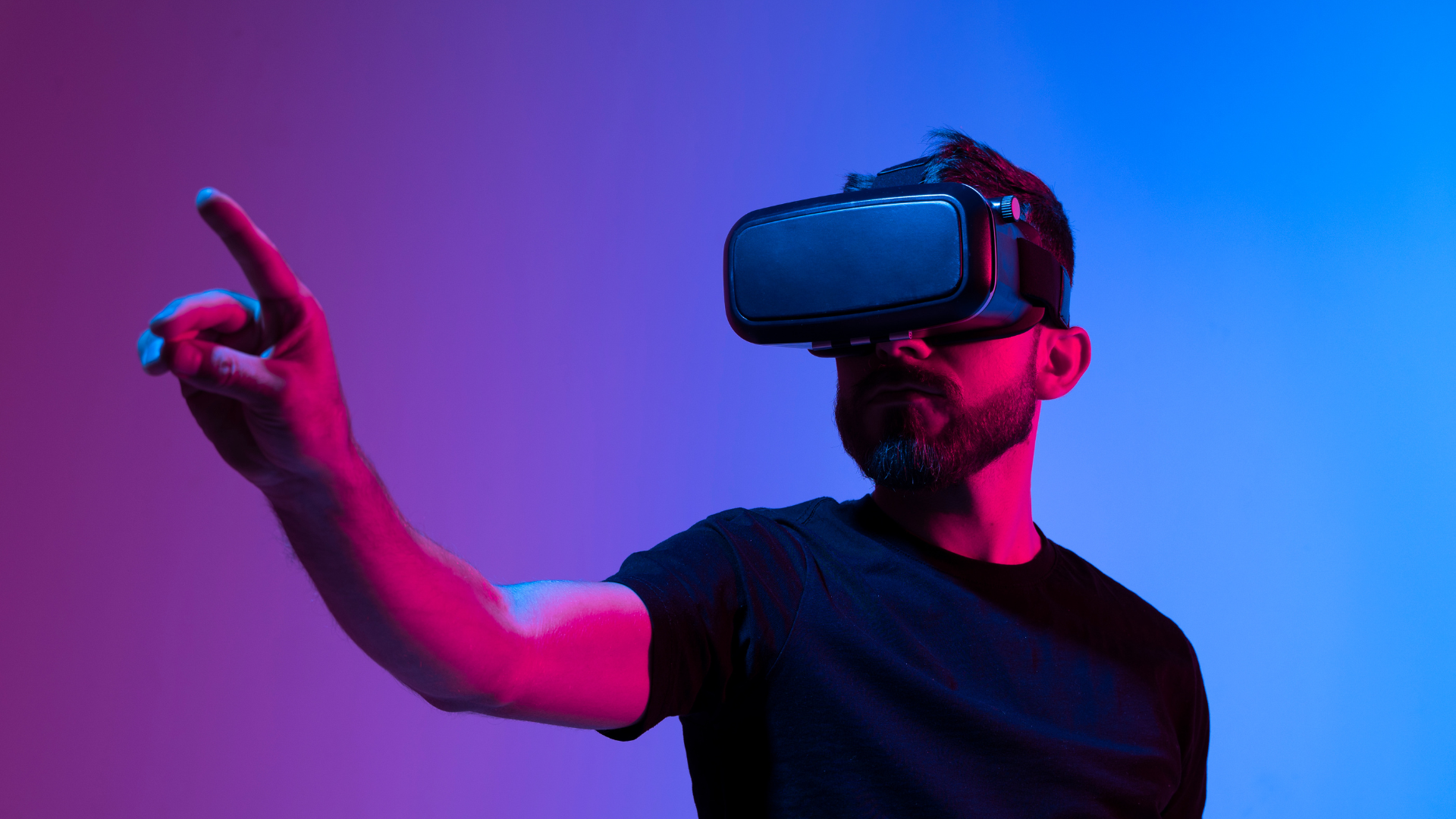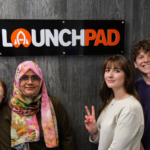When it comes to the future, our subconscious mind goes to 50 to 100 years later. Unaware that the assumed future can be much closer than we imagine. The concept of ‘Avatar’ was very popular at the time of its release in 2009 and for many years was the best-selling movie in history! But why did we randomly threw avatar movie into this topic? Well… If you remember, in Avatar, there are technologies that allow people to be in a virtual body and step into another world. This idea that once was just fiction, now it’s being implemented. In this post, we are going to go to the world of Metaverse and through our journey to this parallel world to explore educational opportunities in it. So let’s look at the future of education and research in the context of Metaverse.
What is Metaverse
I bet you’ve seen Facebook and all related companies changed their name to ‘metaverse’. But what does it mean? The word Metaverse is a combination of the English words Meta meaning beyond and Universe meaning world. So the main meaning of this word is “beyond the world “. As Zuckerberg in an interview explained metaverse is a network of 3D virtual worlds focused on social connection. In futurism and science fiction, metaverse is often described as a hypothetical iteration of the Internet as a single, universal virtual world that is combined with the use of virtual reality (VR) and augmented reality (AR) headsets. (source) This term is originated in the 1992 science fiction novel ‘Snow Crash‘ by Neal Stephenson as a portmanteau of “meta” and “universe.” Recent interest in metaverse development is influenced by Web3 and the idea for a decentralized use of the internet. As a result, Metaverse can be considered the parallel world we have always been talking about. Of course, with one small difference, that not everything in the meta-world is supposed to be the opposite of reality, like the imaginary parallel world in our minds. But what is the atmosphere like?
Metaverse is in fact a platform made of the latest technologies in the world. Of course, this is not the end, Metaverse is a space where you can live! An experience that may seem strange, but it may not be far off. Let’s go back to the beginning of this article and movie of Avatar. If at the time of making this film, in 2009, we were asked, “How many years do you think this technology will be introduced?” Our response was probably not less than 30 to 40 years. But as we observe, in this short period of time since 2009, great progress has been made in this field. And if you are a gamer, you have probably already experienced it in computer games. The experience of playing with virtual reality or VR glasses is very similar to what we will see in Metaverse. With the difference that our senses will also be active. Now, what will be the impact of Metaverse on teaching and learning?

The role of Metaverse in learning and teaching
Well, let’s get to the point! The Covid-19 pandemic and the closure of universities and schools have largely introduced us to virtual education and distance learning. Although distance learning has its own advantages , for example, saves us time and money, it also has some disadvantages. Perhaps the most important disadvantage of virtual education that almost everyone has encountered is that it is soulless, which has become almost one of the barriers to our learning. Yes, majority of us may enjoy our space when experiencing an online class but in fact, some of the tools available for online education can be boring for the new generation after a while. For this reason, learning experience and motivation can decreases very quickly.
But if we could find ourselves in a virtual classroom, with a virtual chair and bench and a space designed to our liking, how much would our learning progress? The most important feature of the metatarsal space that has made us think of using it for learning and teaching is this sense transfer. Even recently, Zuckerberg unveiled a glove that conveys the feeling of touching objects in the virtual world! Isn’t that wonderful? You can attend the right class without moving out of your comfort of home only with the help of a virtual reality glasses and tools. A classroom that is far more vivid, real, and engaging than your past experiences.
Of course, the important role of these tools should not be overlooked. Skyrim, Adobe Connect, WhatsApp, Zoom, Second Life, MineCraft or any other space where your class was held during this period have actually done you a great favor. These tools prepared your mind to enter the world of meta-learning.
Learning languages through Metaverse
One of the most important things you can do to learn English or any language quickly is to use a variety of resources. From videos and photos to music and lyrics, they can all increase the speed and quality of your language learning. But do you think a teacher can give you all of them together? After all, do classroom spaces and facilities allow him or her to use all of these to improve your learning? of course not!
This is where Metaverse comes into play. As we said, the recent Pandemic apart from all its negative impacts introduced us to the online learning environment. During this time we used a variety of applications to learn. For this reason, both the student and the teacher are now more or less familiar with this type of learning. The difference is that with the growth and development of the Metaverse, this learning takes place in a more attractive environment. For example, the teacher can easily play the desired video by clicking a button.
However, there are problems with virtual classrooms such as the students’ lack of commitment to the classroom. But this problem will be largely solved in meta-classes. Why? Because even though your body is away from the classroom, your virtual body or avatar is always in the classroom. That’s why you always have to be vigilant in class. Other weakness of online English language teaching is that language learners are not very interested in participating in the class. Most importantly, many group activities are almost useless. Fortunately, Metaverse provides an opportunity for people to participate in class and group activities from home more efficiently.
Real example of teaching and learning in Metaverse
If you think Metaverse is unattainable right now, we will give you some proof to believe it’s a technology that we have to adapt to sooner or later. A similar example of Metaverse was conducted recently at the Seoul Urban Education Office decided to hold science classes for some students in a virtual reality space. This helped them to have a better experience of science lessons. This project is a virtual science exhibition hall called “Gather Town,” where about 2,100 elementary and middle school students can participate in various science activities with their avatars. Students can freely look around the hall using Google’s Chrome browser. Through a VR-based platform, students can have hands-on experiences using their own avatars. South Korea’s online giant Naver has gained more than 200 million users through its avatar platform Zepeto.
Seoul education office director Kim Yeon-bae quoted that they “will provide virtual reality and artificial intelligence programs through the operation of metaverse-based creative science classrooms and do our best to serve as a hub for convergence science education,” The office also conduct its virtual music classes, observations of astronomical objects and AI-based art classes. This experience helped the students to learn better. Without wanting to harm themselves or others, and more importantly, without losing the pleasure of conducting scientific experiments.
So, Seoul is the first City to enter Metaverse. Korean government began capitalizing on that metaverse future and the South Korean city of Seoul says that it’ll be the first major city government to “enter the metaverse.” Their platform will kick off with a virtual new year’s bell-ringing ceremony this December. In 2023, the city plans to open “Metaverse 120 Center,” a place for virtual public services where avatars will handle citizen concerns that could previously only be addressed by physically going to city hall. If the plan is successful, Seoul residents can visit a virtual city hall to do everything from touring a historic site to filing a civil complaint by donning virtual reality goggles. The $3.3 million investment is part of mayor Oh Se-hoon’s 10-year plan for the city, which aims to improve social mobility among citizens and raising the city’s global competitiveness. It also taps into South Korea’s Digital New Deal, a nationwide plan to embrace digital and AI tools to improve healthcare, central infrastructure, and the economy in its recovery from the economic crisis caused by COVID-19.
Of course, this example is far from what we are about to see in the role of the Metaverse in learning and teaching. However, given the tremendous speed of technology growth and development, the time interval between access to this technology will not be long.
Positive features of learning and teaching in Metaverse
As we mentioned, the Metaverse environment provides a completely open and free space for the teacher and the student. In this way, they can make the classroom and educational space according to their taste and style. This very important point has several benefits, which include:
- Increase classroom participation: By designing a good classroom, you can create an atmosphere that is similar to a real classroom. Because of this, the desire to participate in yourself or your students is strengthened.
- Continuous improvement: If someone had talked to you about a virtual classroom 20 years ago, you probably would not have taken them seriously. But over the last 20 years, there have been tremendous changes in various technologies. Metaverse is no exception to this rule and is advancing with the growth of technology. This is in stark contrast to our schools and universities, which continue to be run using traditional teaching systems.
- Sharing: The easy sharing feature in Metaverse is not seen even in real classes! With the help of learning and teaching in Metaverse space, you can easily share whatever you like with others. With Metaverse we learn how to enjoy learning.
- Saving: Training in the metatarsal space can help you save in various aspects of life. From taxi fares to the time it takes you to get to college and school, and even the energy and energy you need to do it. With this style of learning you can save on all of these things. Of course, this technology will certainly not be cheap. However, the future of education is tied to Metaverse.
Conclusion
The speed of technological progress is so high that a new phenomenon is unveiled every moment. In the meantime, there are some of them, such as Metaverse, that can be counted on as the future of training. As we read in this article, this technology can also enhance your learning. So we have to prepare for it now. Remember that time does not stand still for anyone, so it is better to coordinate ourselves with it.







Leave a Reply
You must be logged in to post a comment.